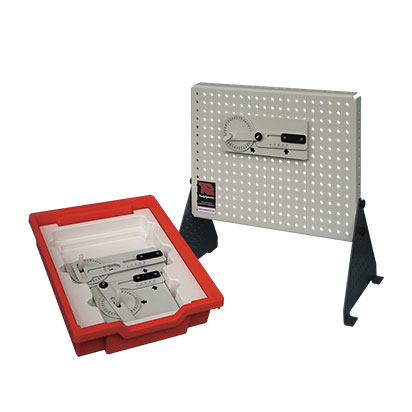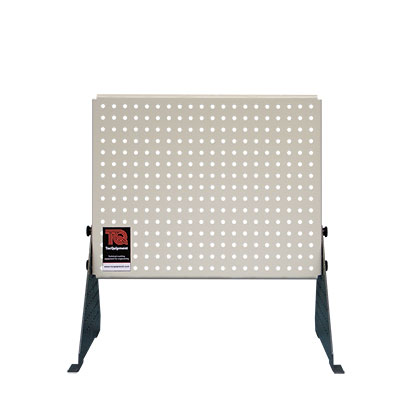Description
This versatile kit is part of a series that allows many experiments using different arrangements of their parts. Students, teachers or lecturers fit the parts of the kit to the Work Panel (ES1) (supplied separately) to study or show an engineering science topic.
This kit includes three popular mechanisms for experiments in the conversion of motion from linear to rotary or rotary to linear. These include the Scotch Yoke (sometimes called ‘donkey crosshead’ or ‘slotted link’), the Crank and Slider, and the Quick Return mechanisms. Students test each mechanism to see how it works and note the differences in the way that each mechanism converts the motion.
The three mechanisms are the same as those used in real applications, such as combustion engines, power assisted valves or fluid pumping systems. Each has a unique way of converting motion, shown by the experiments.
The kit introduces students to key engineering terms such as reciprocating motion, rotary to linear motion and linear to rotary motion.
TecQuipment supply a CD-ROM with the Work Panel (ES1). It includes all the worksheets, guidance notes and lecturer notes (with answers) needed for typical experiments with each kit. The selection of parts in the kits and the choice of fixing points on the work panel means that teachers or lecturers may extend the experiments to an even greater range.
Key features:
- One of a series of 18 kits for experiments in fundamental engineering science topics
- For use on any engineering course from foundation to postgraduate
- Flexible and modular – each kit fits onto the Work Panel (ES1) for experiments and classroom demonstrations
- Supplied in a hard-wearing storage tray with moulded insert to hold parts securely and a graphical list to help check the kit contents
- Rugged and durable parts for safe ‘hands-on’ experiments – allowing better understanding
- Contains three popular mechanisms that show how they can usefully convert motion from one form or direction to another
Learning outcomes:
- Conversion of motion using the ‘Scotch yoke’ (or ‘slotted link’)
- Conversion of motion using the Quick Return mechanism
- Conversion of motion using the Crank and Slider






